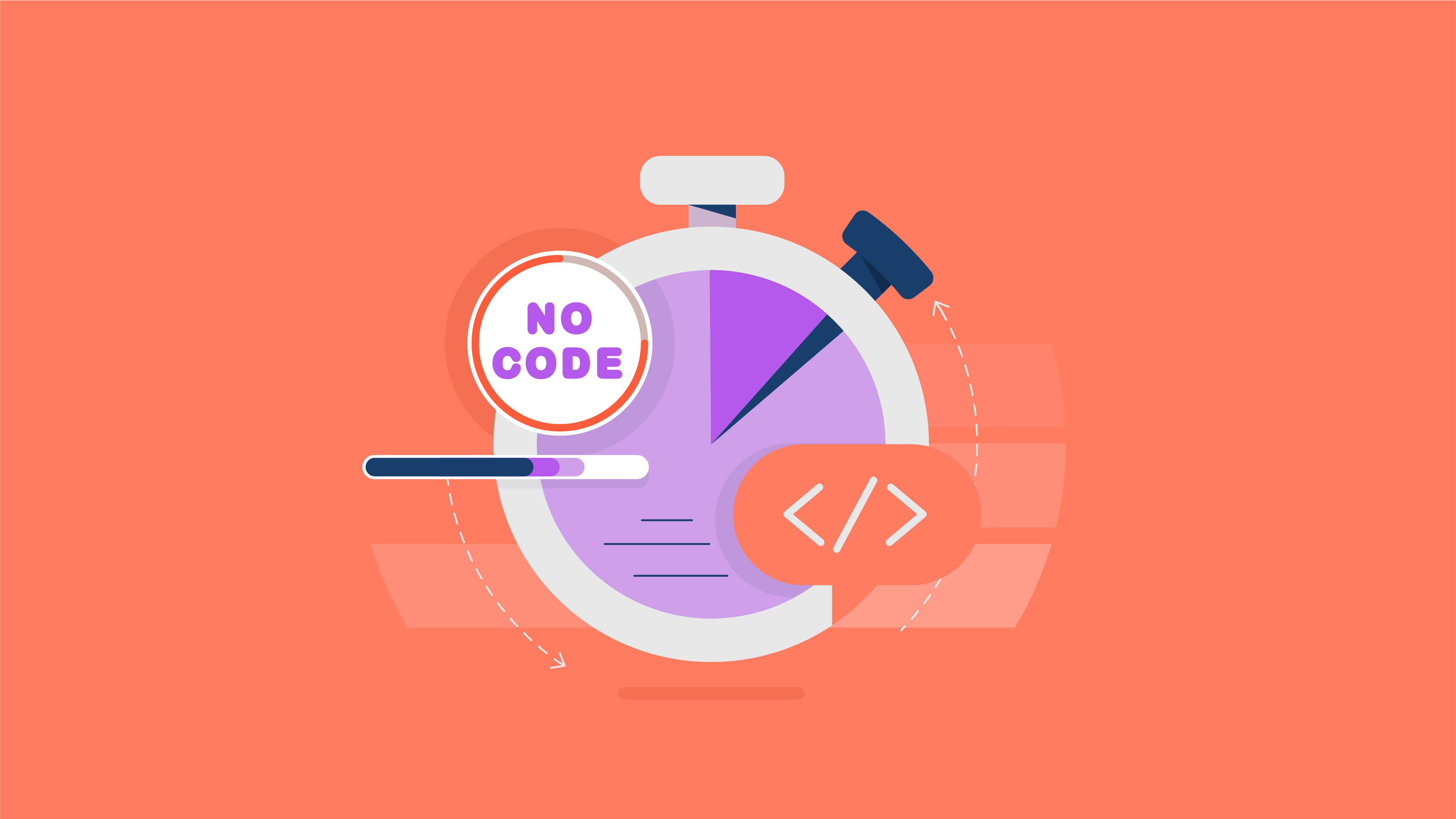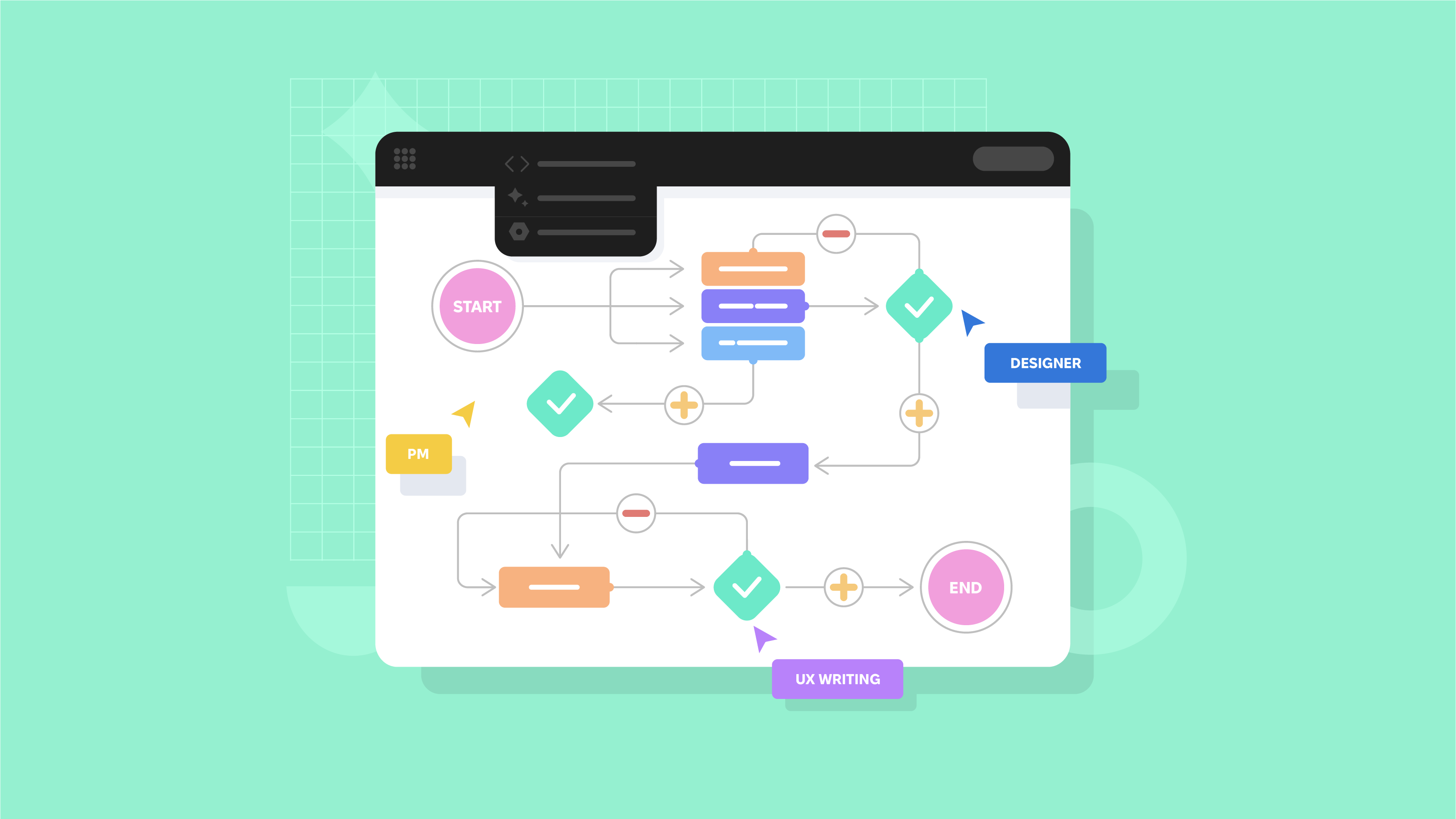The software development cycle includes a few mandatory stages, and none of them can be ignored. The creation of SRS, or software requirements specification, must be highlighted since it is the document that the development team must rely on to build a website or mobile app.
Writing software requirements specifications requires the involvement of business analysts, developers, system architects, and potential customers. Yes, it is not a mistake. Customers will help build a project that meets their needs. But first things first — this guide contains everything about SRS in software development and how to write it (the SRS template is also at your fingertips).
What Is Software Requirements Specification?
Software requirements specification (SRS) is a comprehensive description of the software that is planned to be developed. SRS includes use cases that describe all kinds of software interactions with users. Use cases are also known as functional requirements.
In addition to the use cases, the software requirements specification also contains non-functional requirements (or additional ones). We will review all types of requirements in detail below.
An SRS is a basis for further planning, design, and coding. Also, QA engineers use SRS while testing the product. However, an SRS doesn’t include a detailed description of design, development, or testing processes. Its goal is to determine the right development strategy and select the tech stack that will be used.
The Importance Of Software Requirement Specification
If you have an intention to create software, you can conduct market research and find out what needs to be done to release a competitive product. Also, you can build a list of features to be included in the mobile app/website. But if you are not a developer, you don’t know what to do next.
Therefore, you need to get in touch with a dependable and skilled software development company like Cadabra Studio that will do the most complicated job for you. A website like Clutch.co is an excellent option to find out everything about developers — it contains all information about the company and reviews from real clients.
Okay, you hired app developers, and then you need to make sure that all your requirements will be kept up. That is why it is crucial and required to create the software requirements specification document, where all details of the future project are stated.
Also, there is an article containing tips on how you can hire the best app developers. We recommend reading it.
The SRS document contains information about clients’ needs and particularities of the development process, what it must include depending on the project. Thus, an SRS helps developers and designers build a project that meets clients’ and owner’s needs. All participants of the development team get the required insights during the product creation process.
Besides, we want to add that the SRS document is a vital document to avoid any misunderstanding between development team members and customers. Moreover, this document is a must-have if you need to attract investments — your potential investors will need to get acquainted with the SRS document.
Key takeaways:
- Creating a Software Requirements Specification (SRS) document is essential, as it outlines project details and client needs.
- The SRS helps developers and designers align the project with client and owner requirements, providing valuable insights to the development team.
- The SRS document also serves as a vital tool to prevent misunderstandings among team members and is essential for attracting potential investors.
- It bridges the gap between the client’s needs and the development process, promotes effective communication within the team, and plays a crucial role in attracting investments for the project.
- As a result of all of the above, clear documentation can significantly save time, resources, and money to create a truly high-quality and modern solution.
Learn more about tips on how to pitch an app idea and attract investments — there is an ultimate compilation of tips from Cadabra Studio.
How SRS Differs From A Brief And RFP
There are such conceptions as a development brief and a request for a proposal (RFP). These documents may also be created before starting the development. And the abundance of documents may confuse you, so we want to spell everything out.
A development brief is a basic description of your future plans and ideas you are going to make real in software. Simply put, our specialists interview you to obtain more information and use it as a starting point for the upcoming development process.
A request for a proposal (RFP) is usually created by a client since this is a request where they can indicate necessary details and clarify many issues for a development team.
Thus, a brief may be unnecessary if you write an RFP. If you don’t know how to write an RFP, you can also use our guide on how to create web development RFP as a tutorial — it contains an RFP template as well, that fits both web and mobile software.
Finally, an SRS document is an official approval for your project development that contains detailed technical and non-technical info about everything related to the project.
Key takeaways:
- A development brief is a basic description of future plans and ideas for software development. We create it after specialists interview the client to gather information for the software development process.
- The client typically initiates a request for a proposal (RFP), and this document specifies necessary details and clarifies issues for the development team.
- SRS document (Software Requirements Specification) is an official approval for project development. It contains detailed technical and non-technical information about the project.
Understanding the distinctions between a development brief, RFP, and an SRS document is crucial for effective communication and project management, especially when it comes to complex fintech projects.
An SRS Layout: What It Includes
Although you will find the software requirements specification sample at the end of the article, we consider it necessary to make a bulleted list of the primary points your SRS must include.
- The purpose of the project. Here you and the development team describe the software’s purpose and what it should do for users.
- Description. This point includes data about the target audience, business goals, references, document conventions.
- Software description. The product perspectives, features, user class, operating environment, constraints, and limitations (if there are).
- The SRS document includes such requirements as functional, non-functional, and external interface requirements in software engineering. We will cover each of them in the next section.
In addition to these fundamental aspects of an SRS, it’s crucial to emphasize that a well-structured SRS document is key to effective communication and collaboration between stakeholders. If you have ever seen the SRS example for mobile application, you may notice that it acts as a blueprint that guides developers, testers, and project managers throughout the software development lifecycle, ensuring everyone remains aligned with the project’s objectives.
Furthermore, maintaining an SRS is an iterative process, where revisions and updates are often necessary as the project evolves. It serves as a living document that helps to adapt all the processes from UI/UX design to testing to changing requirements and unforeseen challenges.
So, as you can see now, software requirement specifications provide a clear and documented history of the project’s evolution. As such, it’s essential to have a robust change management process in place to ensure that modifications to the SRS are well-documented and approved by all relevant parties, safeguarding the integrity of the project’s vision and goals.
At Cadabra Studio, we know exactly how to make this process smooth and efficient. And we will be pleased to help you with your project specifications. Contact us now to discuss the details!
Types Of Requirements In SRS
The SRS document must include three types of requirements: functional (or system), external interface requirements specification, and non-functional requirements.
Functional Requirements
Functional requirements describe what has to be done. They identify tasks or actions that must be implemented. These requirements determine steps the software must take and what it is capable of performing. It consists of design, graphics, operating system requirements, and constraints (if any).
External Interface Requirements
These requirements include user interfaces (interaction logic between software and user), screen layouts, buttons, functions on every screen, hardware interfaces (here a team describes what devices the software is created for), and other relevant particularities.
Also, software interfaces like frontend and backend stack, database management system, etc. must be included.
Non-Functional Requirements
Non-functional requirements in the software development requirements document imply system functionality’s general criteria, not individual use cases. Thus, they include performance requirements, safety and security requirements, safety quality attributes (adaptability, flexibility, usability, etc.).
Key takeaways:
- The SRS document includes three types of requirements: functional, external interface, and non-functional.
- Functional requirements define tasks and actions, specifying what the software must do, including design, graphics, operating system requirements, and constraints.
- External interface requirements encompass user interfaces, screen layouts, hardware interfaces, and software interfaces (frontend and backend stack, database management system).
- Non-functional requirements establish general criteria for system functionality, covering performance, safety, security, and quality attributes (adaptability, flexibility, usability).
If you don’t have any idea how to write down all these requirements properly — mind to drop us a line and we will provide you with timely assistance.
Techniques To Use When Creating SRS
The SRS document is usually created by business analysts, system architects in collaboration with a customer. But there are some tips on how to achieve the best results by applying existing methods.
- Brainstorming. It’s the most popular technique (that really works, by the way) when a group of people involved in software development shares their ideas to find the best solutions. It encourages the sharing of diverse perspectives, which is particularly valuable in the early stages of software requirements documentation development when you need to identify and explore potential software features and functionalities.
- Interview. It implies both interviews between developers and a customer and between potential users. It is essential to clarify users’ needs clearly. Conducting interviews is essential for obtaining a clear understanding of user requirements. You can gain valuable insights into their needs and expectations by engaging with stakeholders. Interview techniques help elucidate specific features that must be incorporated into the SRS, ensuring that the final product aligns with the client’s vision.
- Prototyping. Typically, prototypes are created when an SRS is completed and approved. Still, a prototype is also an excellent option to provide the user group with a clickable product to test it and get their feedback. It will help designers and developers improve the product.It is also essential in mobile app development when it is critical to identify any design or functionality issues before extensive development, saving time and resources.
- Mind mapping. All participants of the process build a visual map with a hierarchy of the system to see how all components interact. This technique helps to comprehensively understand the difference in specification vs. requirements, the project’s scope, and relationships between different modules and features. It is a helpful tool to ensure that all essential components are considered during SRS development and that the software system structure is well-defined.
- Analysis of documents. The development team needs to analyze such documents as a business plan (if there is), current process flow, contractual agreements, etc. It allows developers to get more in-depth information about the future project.
By the way, business plan creation is a challenging task that requires rapt attention, so we recommend you to read this article: How to Write a Business Plan for a Mobile App.
How To Write A Software Requirements Specification: Five Necessary Steps
What about the proper steps on how to write software requirements document efficiently? Of course, we didn’t forget about them. Five necessary steps are usually followed during the SRS document creation. Let’s see them all.
Draw Up An Outline
First, you need to build an outline of the software requirements specification. It means that the SRS document structure doesn’t have a standardized template, so you can do it on your own or use the one that the software development company uses.
You can use existing templates that you find on the Internet, but we recommend entrusting the project to developers since they have enough experience in building an SRS.
Describe All The Details
This step is a time-consuming one, and here the assistance of the development team will be mandatory. You and the developers fill out the outline and describe all nuances concerning the future development process.
It is worth noting that each detail must be precise for everybody involved in the process, so it is essential to avoid confusion. However, an experienced business analyst knows how to create a software requirements document wisely.
Visualize Everything
If the SRS document contains charts and infographics, images, etc. — it will be an added advantage for participants to capture the idea faster and get more clear insights into how this software must be developed. But don’t overdo with visualization — too many images (some of them may be unnecessary) won’t let development focus on vital elements.
Get Approvals
All stakeholders need to review the SRS document and approve it. If everyone agrees with the intended development process, it is initiated right after the approval. It is recommended that all team members will read a specification. It will help ensure that everything is coherent for everybody.
Make The Specification Prepared For Amendments
Although everything is agreed upon and approved, some changes and updates are possible during the development process. All amendments must be available in the current version of the SRS documents, and all team members are to be notified about them immediately to stay up-to-date.
Key takeaways:
- It is essential to create a proper and clear outline for the SRS document. There is no standardized template, so you can customize or use one from the development company.
- Collaborate with the development team to elaborate on project nuances and ensure precision in documenting details to avoid confusion.
- Use charts, infographics, and images to enhance understanding. Avoid excessive visual elements that may distract from vital information.
- Have all stakeholders review and approve the SRS document. Initiate the development process upon unanimous agreement.
- Acknowledge the possibility of changes during development. Keep the SRS document updated with all amendments and inform the team promptly.
- Efficient SRS writing involves careful planning, collaboration with the development team, and a clear, organized approach to documentation.
Aspects That Make An Excellent Software Requirements Document
Finally, we want to share some ideas on how to improve the SRS document. There are particularities you must follow when creating a specification. And you will find them below.
- Easy-to-understand. Although it is already a clear-cut point we mentioned above, remember it once again. Any misunderstandings are impossible in your SRS document. Everyone must catch it right.
- Comprehensiveness. The specification should contain enough information for software development. But mind to eliminate unnecessary components and leave out all crucial details. The business analyst will help you single out all the required information.
- Feasibility. The project has to be built on existing and used technologies. It means that an SRS shouldn’t contain a possible tech stack that uses upcoming tools that are not tested yet. Thus, the project must be fully-functional, even though it is not created yet.
- Flexibility. That is what we meant when we told you about the prepared SRS. The world of software engineering is adaptive, and some things may change during the development process. Developers must be flexible and ready to apply another tool or technique while building the product. And all amendments must be reflected in the software requirements specification.
- Consistency. All sections and requirements in your SRS must be coordinated, and they cannot contradict each other. All details must be thought out and logically connected.
- User-centric focus. Ensure that the SRS reflects a user-centric approach. It should not only define technical requirements but also prioritize user needs, ensuring that the software ultimately serves its target audience effectively.
- Scalability. It is essential to think about future growth and scalability. An excellent SRS should outline a plan for accommodating increased demands, users, and data, allowing the software to evolve and expand without significant overhauls. This is the key to smooth scaling and fast adapting to changes and new challenges.
- Security and compliance. This aspect is critical for any industry, not only for fintech web development, where you need robust security measures to protect users’ sensitive data. So, emphasize security and compliance requirements. The SRS should address security measures, data protection, and regulatory compliance, reflecting a commitment to safeguarding data and adhering to industry standards and legal requirements.
Do you still have any questions or hesitation that concern SRS? Contact us to get a free consultation.
A Software Requirements Specification Example
We have prepared a template of the software requirements specification you may use as an SRS example for software development and your future product.
It contains all the necessary steps and software requirements we have covered in the article. You can look it through and download it by following this link. However, some points can always be changed and adapted to the project’s peculiarities.
Wrapping Up
Creating the SRS document is a must-have stage that the development team should think about if you don’t want to get the product failed. The software requirements specification is created to navigate the development team to the same result and build the software that meets future users’ expectations.
Transparent communication and collaboration are fundamental during the SRS document creation process. It is crucial for the development team and stakeholders from various departments to work together seamlessly to ensure that all aspects of the project are comprehensively covered. This collaborative effort ensures that the software aligns with business objectives and customer needs.
A well-crafted SRS document is the cornerstone of a successful software development project. It guides the team through the entire development lifecycle, from planning to execution, ensuring that every stakeholder is on the same page.
If you don’t have enough time to figure out how to write a requirements document, you should collaborate with professionals like Cadabra Studio, who knows firsthand where to start and what to do.
Our staff includes mobile and web developers, UI/UX designers, project managers, QA engineers, business analysts, and other specialists.
You just need to contact the Cadabra Studio team for proceeding to the next steps. Our assistance would start right away.
Frequently Asked Questions
External interface requirements define the hardware, software, or database elements with which a system or component must interact. This definition was given by Richard Thayer in 2002.
The creation of an SRS document is a prerequisite in the development process. Without software requirements specifications, it is impossible to create a project in the form in which you would like to see it.
To create an SRS document, create an outline of the document and immediately define the purpose of the software. Next, review, describe the main requirements (functional and non-functional), add additional information, and get his approval.











